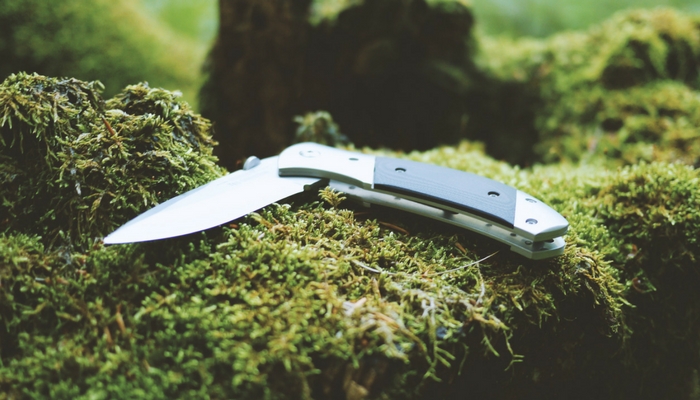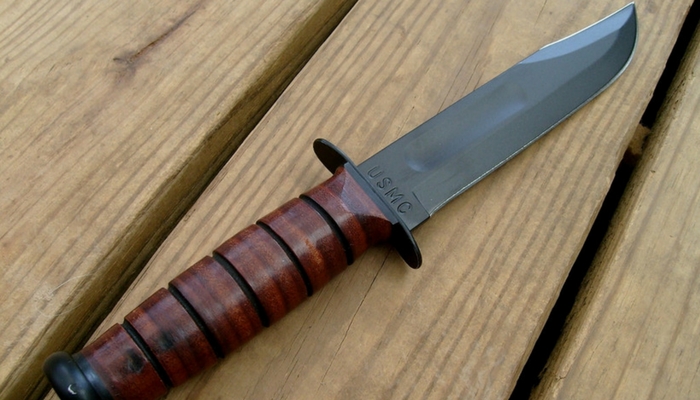 There has always been a debate over which would be better—a folding pocket knife or a fixed blade knife. While folding knives offer convenience, fixed blades allow for more strength. However, it is also possible to find a folding knife that offers the same strength and durability that you would expect from a fixed blade knife. And, so, the debate continues to rage on.
There has always been a debate over which would be better—a folding pocket knife or a fixed blade knife. While folding knives offer convenience, fixed blades allow for more strength. However, it is also possible to find a folding knife that offers the same strength and durability that you would expect from a fixed blade knife. And, so, the debate continues to rage on.
I have taken some time to compile a bit of information to shed much-needed light on the subject and give you a closer look into the massive world of pocket knives and fixed blade knives. The information is meant to better educate you so that you can make a more informed decision about which knife to purchase. But, hey, you can always be safe and go the route of purchasing both!
What Is a Folding Pocket Knife?
Let’s first discuss what a folding pocket knife is and what they are typically used for. A folding pocket knife consists of one or more blades that fit inside of the handle of the knife. They may also be known as jackknifes and are designed to fit into your pocket. The blade length varies but typically falls between two and six inches in length.
Folding pocket knives are commonly looked at as very versatile tools and can be used for a multitude of different tasks that range from the simple opening of an envelope to something more serious such as self-defense.
The pocket knife is a classic and iconic tool that has been carried by craftsmen, outdoorsmen, and everyday people for years and years. They are usually taken on camping, fishing, hunting, and hiking trips, and there are several styles and designs you can choose from that range of features and additions.
Types of Folding Pocket Knife
With an abundance of options to choose from when it comes to folding pocket knives, it may be a bit overwhelming at times. There are several different types of folding pocket knife available including clip-point blades, tanto blades, and drop-point blades. In addition, you can also find stainless steel and carbon steel blades, along with serrated or non-serrated options.
Plain vs. Serrated Edge
A plain edge for a folding pocket knife allows the user to maintain better control over cutting and allows for improved accuracy. However, you will not be able to use the knife to saw.
A serrated edge allows for the sawing motion, but they are significantly harder to sharpen compared to their plain edge counterparts.
Blade Types
A clip point blade is one of the most popular and boasts of a concave shape that makes the tip even sharper. They are ideal for everyday use as well as hunting and are suitable for both piercing and slicing.
A drop point blade is more of an all-purpose blade and is most often found being utilized in pocket knives that are meant for more hunting needs and survival needs. They can skin and pierce, chop, and slice efficiently.
A tanto point blade has a high point with a flat grind and no belly. It is also considered an all-purpose blade and its design makes it suitable for cuts and piercing if the materials are a bit tougher.
What Is a Fixed Blade Knife?
A fixed blade knife, on the other hand, does not fold and was designed to accomplish many different applications including being used as a hunting knife, survival knife, combat knife, and boot knife.
Fixed blade knives have more of a reputation for being a more hardcore knife option. They are built to be strong and big and comes in a variety of different sizes depending on the use. Because of their strength, they rarely break, and there are zero moving parts to have to worry about.
With no moving parts, they are much easier to clean and maintain than folding knives that have a hinge and other moving parts to consider. The blades are usually about twice the length of a folding knife as well and can be used for more superior tactical use. If you are using a fixed blade knife for self-defense, it is a lot faster to pull out and use than a folding knife.
Also, fixed blade knives are more known for being optimal survival tools because of the increased versatility they offer. They can perform a number of tasks efficiently including hammering, digging, splitting, prying, and cutting.
Features of Fixed Blade Knives
Just like with folding pocket knives, you have the same choices about the blade when it comes to fixed blade knives. However, with fixed blade knives, you will also want to educate yourself regarding the style you need and the tang.
The Tang
The tang is often mentioned when discussing fixed blade knives. A full tang knife means that the knife is a solid piece of steel and the handle pieces are pinned to both sides of the blade. If the knife is full tang, then you will know you are getting strength and durability.
A push tang means that the blade is pushed into the handle and then secured with some kind of glue or epoxy material. While there are other tangs available for fixed blade knives, your final decision will rest mainly on the budget you have in mind and how strong and sturdy you need the blade to be.
Choosing Between a Folding or Fixed Knife
When it comes down to choosing between the two types of knives, you need to understand that all knives are not created equal, and each has their own features and qualities to set them apart and get the job done.
Folding pocket knives are the ideal option if you are looking for everyday carry (EDC), a shorter blade length, a durability and strength for its size. For more serious and heavier tasks, a fixed blade knife may offer more in the realm of strength and durability and may do a better job when it comes to getting the job done.
Either way, you should be looking for high-quality, strong materials, and the right blade to complete your tasks.


